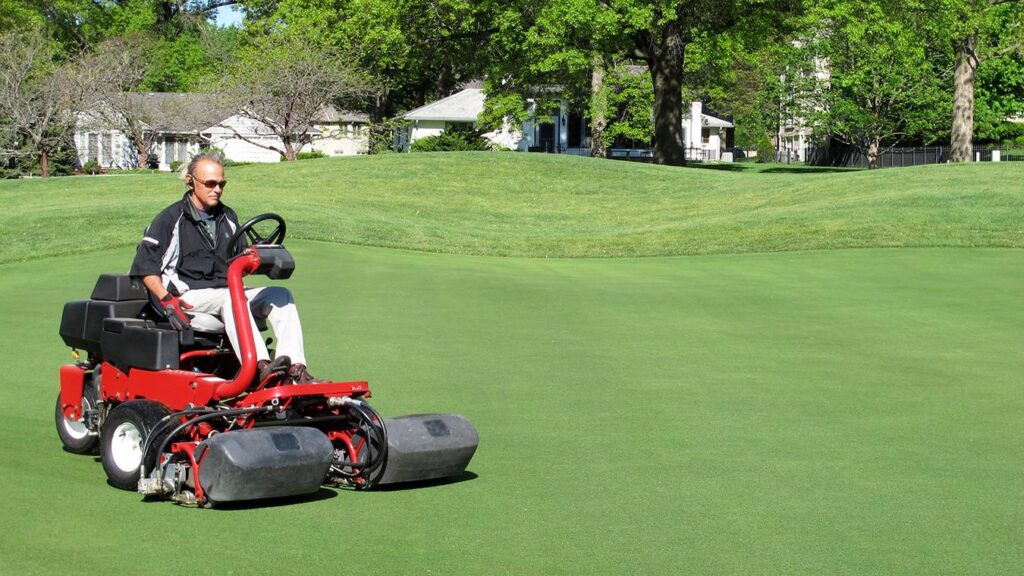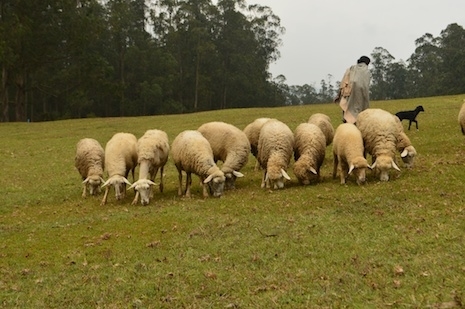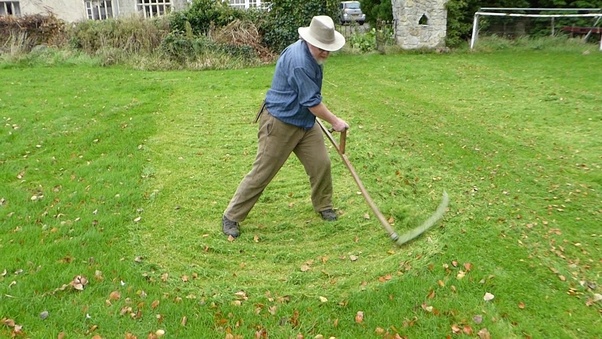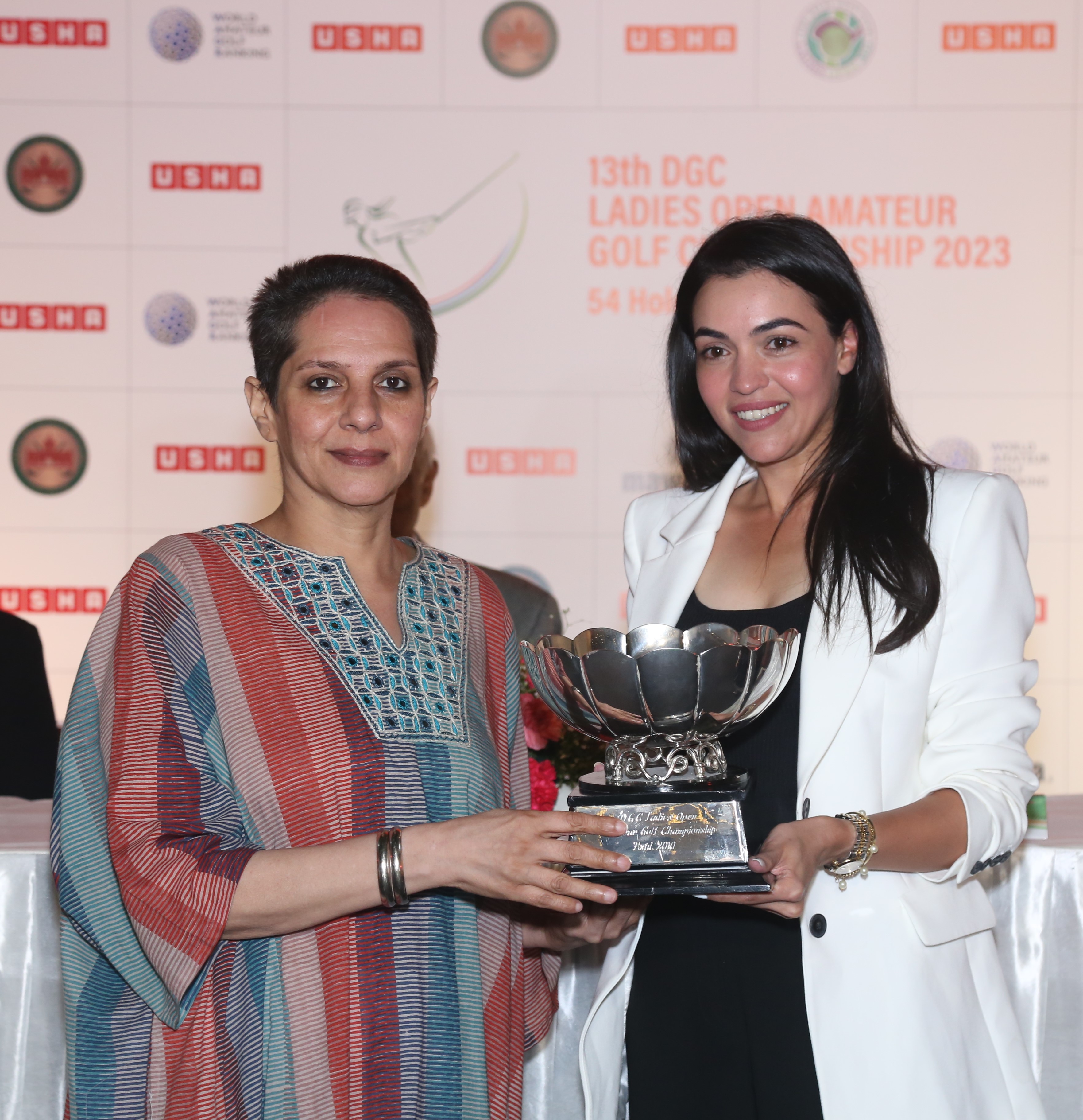
Golf since its beginning has been played on fine, short textured turf. This requirement was met in those early days by selecting areas having natural finely textured wiry turf comprising slow growing grasses. It’s not surprising that golf was confined to few golf courses in east Scotland to meet this requirement in the beginning. The links connecting the dunes the farmlands provided relatively even land created by sand blown by winds through natural top dressing which made the natural bumps and hollows much less severe. Selection of these grounds also laid out the first principle of Golf Course Design I.e. ‘to work with the lay of land available‘.
The requirement of short, even and fine textured turf made Mowing a pre requisite for golf courses as it could otherwise be not an all year around pursuit in areas away from such naturally occurring areas of thin sandy soils. The game could not be played in places having better soils as they became lush pastures and the grass could not be kept short by using scythes or the like tools.
 Sheep and Rabbits. Mowing in the early days was done by grazing animals such as sheep and Rabbits and the practice went on for centuries. The advantage of zero cost, some fertilizing through droppings was certainly a big plus but the practice also had a severe disadvantage – it encouraged growth of more lush but alien grasses which adversely impacted the playing conditions. The sheep also had a role to play in creation of bunkers though there is a debate on which came first – The Bunker or the Sheep?
Sheep and Rabbits. Mowing in the early days was done by grazing animals such as sheep and Rabbits and the practice went on for centuries. The advantage of zero cost, some fertilizing through droppings was certainly a big plus but the practice also had a severe disadvantage – it encouraged growth of more lush but alien grasses which adversely impacted the playing conditions. The sheep also had a role to play in creation of bunkers though there is a debate on which came first – The Bunker or the Sheep?
Scything – The Early Mechanisation. By late Nineteenth century, Green keepers had begun using alternative ways of keeping the grass short and Scything was the most commonly used. Scything continued to be used right till beginning of twentieth century to at least mow the tees with the only mower generally available was being reserved for Greens.
By late Nineteenth century, popularity of golf had grown and golf courses were first taken away from links to Heathlands and then as pressure mounted from cities, they began to be constructed in richer and heavier soils. The demands generated from this rising popularity of golf included the necessity of mowing not only Greens and Tees but also the fairways. Clearly, mechanisation of mowing had become a necessity.

The First Mowers. Edwin Budding, an engineer employed in a woollen weaving firm in Gloucestershire designed a machine in 1830 which comprised a cutting cylinder with helically arranged blades working against a sharp bottom blade. He designed the machine to first to shear the woollen cloth to produce a smooth surface and then developed the concept to mow grass. Ransomes of Ipswich, a company which still exists, started producing the machines under licence from 1932. Initial prototypes were heavy and cumbersome machines and Ransomes soon shifted to their own design in 1858 which included an enclosed gear box. Ransomes model was a big improvement and soon became successful with more than 1000 machines being sold in the first year itself. In times to come, more than 30 firms joined in the fray with most under licence from Budding but some also went for their own design aided by the fact that Budding’s patent was not applicable in Scotland.
Self-Powered Mowers. Attempts were made to make the machines lighter with ability to cover larger areas quickly. Side wheel driven design made them lighter and cheaper but a steam engine powered mower developed by Leyland weighed 1.5 tons and could be operated only in a few estates. Ransome then brought out an internal combustion engine mounted mower in 1902 but it remained popular only in sports grounds and was not widely used in golf courses because they gave a poor finish.
Golf Courses Continued to use manually pushed/pulled mowers and that too not every day. It probably was so because the requirement of very finely mowed surfaces had not become the norm till then. It was only in 1930s that further innovation made the use of over green mowers possible and golf courses started using them. The initial models could not be lifted and turned so the greens had to be mowed half in one direction and the other half in other direction.
Mowing the Fairways. Innovations in mowing the fairways developed on a similar path and the first one to be used was a single unit horse drawn machine in the US in 1914. Interestingly, the horses wore leather boots to prevent damage to turf! They also carried a trailing canvas to collect the grass clippings and flowering seeds which reduced the weeds. The design principle continues to be followed to this day. The horses were replaced by towing tractors after the first world war and single unit became a gang of three. In times to come, the machines came mounted on their own prime movers and became much quicker and more manoeuvrable.
Mowing Before Play. The machines enabled the green keepers to mow the areas quickly and frequently. The biggest advantage came that the greens and other areas could be mowed ahead of players and mowing on daily basis became possible. There have been some disadvantages like increased compaction which necessitated more frequent aeration. Mechanical mowers also do not provide the flexibility which hand movers provide to green keepers to go over weak areas. Overall, though, the advantages outweigh the disadvantages but one needs to appreciate that similar quality can be achieved through hand mowers provided the traffic was lesser.
Mowing and Speed of Greens. In the last few years ‘Green Speed’ and ‘Stimpmeter’ have been the biggest pain points for green keepers and it’s not uncommon to see particular speeds being demanded as standards despite its apparent futility. Mower has been a very important part of machinery and has become even more so with these added expectations. Green keepers have known for long that – Better the mower, Better the Green. Mowing operations though depend on criteria like height, frequency, clipping rate and direction of cut among many others.
The Bald Green is Ugly and Often a Dead Green. Shaving of greens is often resorted to for getting fast speeds on Greens. This is often a recipe for disaster. Mowing grasses below threshold heights of 3 mm for a period of time kills all grasses as they don’t have enough leaf cover to provide food to the plants. This threshold height is even higher for warm season grasses. Experiments have shown that gimmicks like lowering the mowing heights, not watering the greens, brushing or heavy sanding showed little positive effect. Sound long term green keeping promoting healthy fine leaved turf with some rolling seems to produce the best speeds. Comparisons with other golf courses are undesirable as different type of grasses produce different results. Greens with cool season grasses are quicker than those with warm season grasses. Then again fine fescues will be quicker than Bentgrass and those in turn will be quicker than Poa Annua. One thing is certain though – ‘Bald Greens are often Dead Greens’.
Frequent Mowing is Better. It’s often tempting to mow the grasses sporadically especially when the height of cut is being increased. Many believe that spasmodic mowing is less stressful than daily mowing. Experiments show this to be not true because daily mowing creates less load and infrequent mowing leads to poor and injurious cuts to the plants. It is also better to remove clippings as too much of them left on turf creates a decaying mulch which becomes a breeding ground for microbes and fungi. And remember that mowing includes both horizontal and vertical cutting of leaves in a reasonable proportion.
Mowing has been the pre requisite of the game of golf right from the times of its birth. It has evolved over times and the technological advances have taken it to more efficient and time saving operations. The speed and efficiency of operations has led to the feasibility of mowing large areas in a short span of time. This has not only reduced the requirement of labour but also has enabled the operations to stay ahead of play and avoid interference. The ease of mowing is not a licence to shave off Greens and it has to be scrupulously avoided at all times. Mowers are the best machines for the health of golf courses and committees/green keepers should not be trying to economise on costs involved. Economy can be practiced in other areas because money well spent on mowers will be recovered in the long term by producing better turf and better playing conditions. ‘Better the Mower, Better will be the Course’.








